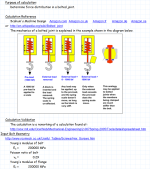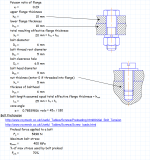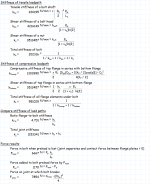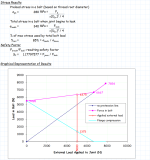BoltedJoint.xls
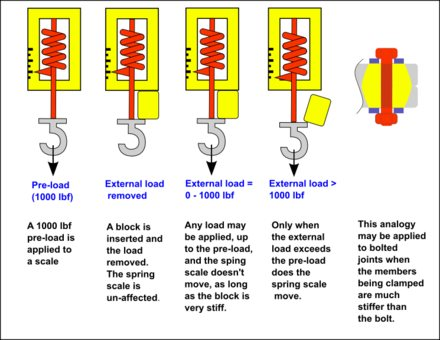
Description
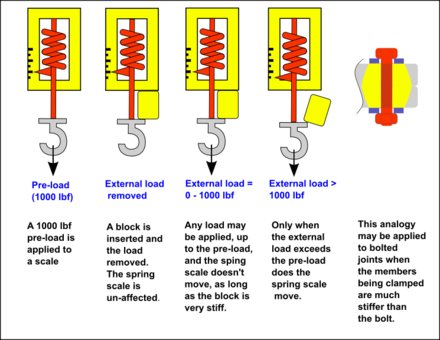
To determine the force distribution in a preloaded bolted joint, you can follow these steps:
-
Understand the Joint Configuration: Analyze the geometry and arrangement of the bolted joint. Consider the number of bolts, their positions, and the clamped components. Identify the specific loading and boundary conditions of the joint.
-
Apply Preload: Apply the prescribed preload or axial tension to the bolts in the joint. Preload refers to the initial tension applied to the bolts during assembly to create clamping force and prevent relative motion between the joint components.
-
Consider Material and Contact Behavior: Take into account the material properties of the joint components, including the elasticity and behavior of the bolts, clamped parts, and any washers or other elements present. Consider the interaction between the bolt and the clamped parts, including potential variations in stiffness, surface conditions, and contact stresses.
-
Analyze Bolt Load Distribution: Based on the applied preload, analyze how the load is distributed among the bolts in the joint. This distribution is influenced by factors such as bolt spacing, stiffness of the joint components, and the clamping force generated by the preload.
-
Consider External Loads: If the joint is subjected to external loads, such as applied forces or moments, analyze their influence on the force distribution in the joint. Take into account the interaction between the external loads and the preload.
-
Use Analytical Methods or Finite Element Analysis: Depending on the complexity of the joint and the desired level of accuracy, you can employ analytical methods or finite element analysis (FEA) to determine the force distribution. Analytical methods may involve equations and formulas that consider bolt stiffness, joint stiffness, and other relevant parameters. FEA allows for more detailed analysis, considering the individual behavior of each bolt and the joint components.
By following these steps and utilizing appropriate analysis techniques, you can determine the force distribution in a preloaded bolted joint. This information is essential for understanding how the joint transfers loads and ensuring the integrity and reliability of the joint under various operating conditions. It is advisable to consult design codes, standards, and engineering resources specific to bolted joint analysis for further guidance and accuracy.
Calculation Reference: http://en.wikipedia.org/wiki/Bolted_joint
OR Schaum's Outline - Machine Design
The mechanics of a bolted joint is explained in the example shown in the diagram below.
Calculation Validation: The calculation is a reworking of a calculation found at:
http://ocw.mit.edu/OcwWeb/Mechanical-Engineering/2-007Spring-2005/Tools/detail/spreadsheet.htm
https://roymech.org/Useful_Tables/Screws/Screw_loads.html
https://roymech.org/Useful_Tables/Screws/Preloading.html#Initial_Bolt_Tensio
Calculation Preview
Full download access to any calculation is available to users with a paid or awarded subscription (XLC Pro).
Subscriptions are free to contributors to the site, alternatively they can be purchased.
Click here for information on subscriptions.

